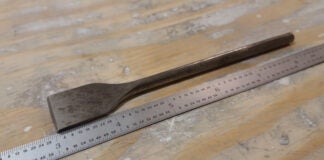 Are you considering an alternative engine? Will you be going to the various shows this season to see what’s available? Perhaps you are concerned that the glossy sales brochures might be loaded with hype. If so, put the numbers through this little “lie detector” system to help separate the wheat from the chaff.
Are you considering an alternative engine? Will you be going to the various shows this season to see what’s available? Perhaps you are concerned that the glossy sales brochures might be loaded with hype. If so, put the numbers through this little “lie detector” system to help separate the wheat from the chaff.
The first alarm bell rings if the company in question isn’t actually offering a product. Maybe it is just fishing for investors. In descending order, give a lot more credence to someone who is offering a product that you can either take home with you from the show (or that can be delivered within one to two weeks after the show) than someone who just has a flying prototype and is conducting demo flights. Further down the ladder would be someone who has a running display at the show, and below that, a static display would rate above someone with a pile of really cool parts and the infamous glossy brochure.
Claims Department
The next test of a company is its claims. Check the brochure. Is the horsepower claim on par with the displacement? Is the fuel burn consistent with the horsepower claim? Are torque and horsepower the same at 5252 rpm? I won’t bore you with the math from which these rules of thumb are derived, but the following can be used to decipher the numbers. Note that these rules apply only to naturally aspirated, four-stroke, gasoline engines, including rotary powerplants.
By the Numbers
Horsepower will always be torque x rpm ÷ 5252. Expressed another way: On a graph, the lines representing torque and horsepower will cross or otherwise meet at 5252 rpm. But you must read the graph carefully, as some are laid out with two different scales representing torque and horsepower, many of which will graph rpm along the bottom. If they don’t meet at 5252, consider that the graph is a figment of someone’s imagination.
Horsepower = cubic inches x rpm ÷ 5250. This works for direct-drive engines or for an engine with a redrive, but you have to use engine rpm, not prop rpm. Remember, this is a rule of thumb, and you have to consider that a modern engine with liquid cooling, fuel injection and an electronically controlled ignition can easily return 10% more power at the same rpm than an old, air-cooled, carbureted engine running on points or a magneto.
For example, an O-200 at 200 cubic inches x 2750 rpm ÷ 5250 = 105 horsepower, but it’s a low-compression engine, so you can deduct a little. The 100-hp Corvair engine, at 164 cubic inches x 3200 rpm ÷ 5250 = 100 hp. The 110-hp Viking engine with 91.4 cubic inches x 5800 rpm ÷ 5250 = 100 hp. Add the extra 10% for all of the modern goodies along with its higher compression ratio, and it comes out at 110 hp for the Viking.
Brake specific fuel consumption (BSFC) = 0.5 pounds of fuel per hour, per horsepower. This too can go another 10% in favor of a modern engine, to as low as 0.45 pounds per hp/hr. We all know that a gallon of gasoline weighs roughly 6 pounds, so we can simply divide the power (100 hp) by 12 (6 ÷ 0.5), and we get 8.6 gallons per hour for a 100-hp engine with a BSFC of 0.5. If we lower the BSFC to 0.45 for a “modern engine,” we get as low as 7.5-gph fuel burn, and if we get crazy and call it 0.4, we get as low as 6.6 gph. So if we have a 100-hp engine that claims it “sips” fuel at 3.5 gph, and that is not specified as an economy setting, we can only assume they are claiming that fuel consumption is with the throttle wide open at sea level, and we walk away. They’re either lying or mistaken, and if either is the case, what else might they be lying or wrong about?
Static Thrust
Unless you plan to pull tree stumps, static-thrust claims are irrelevant, as they are as much a factor of propeller efficiency as they are an indicator of power. The only time that static thrust claims might be of interest is if a comparison between two competing engines were tested with the same exact propeller, on the same day, in the same location. And even then, prop rpm is the true indicator of power, as the engine that makes more power can overcome the drag of the propeller and spin it faster. In reality, one could use a length of 4×4 lumber as a prop, making zero thrust, and the outcome would be of more value than any thrust numbers could be when comparing two engines.












